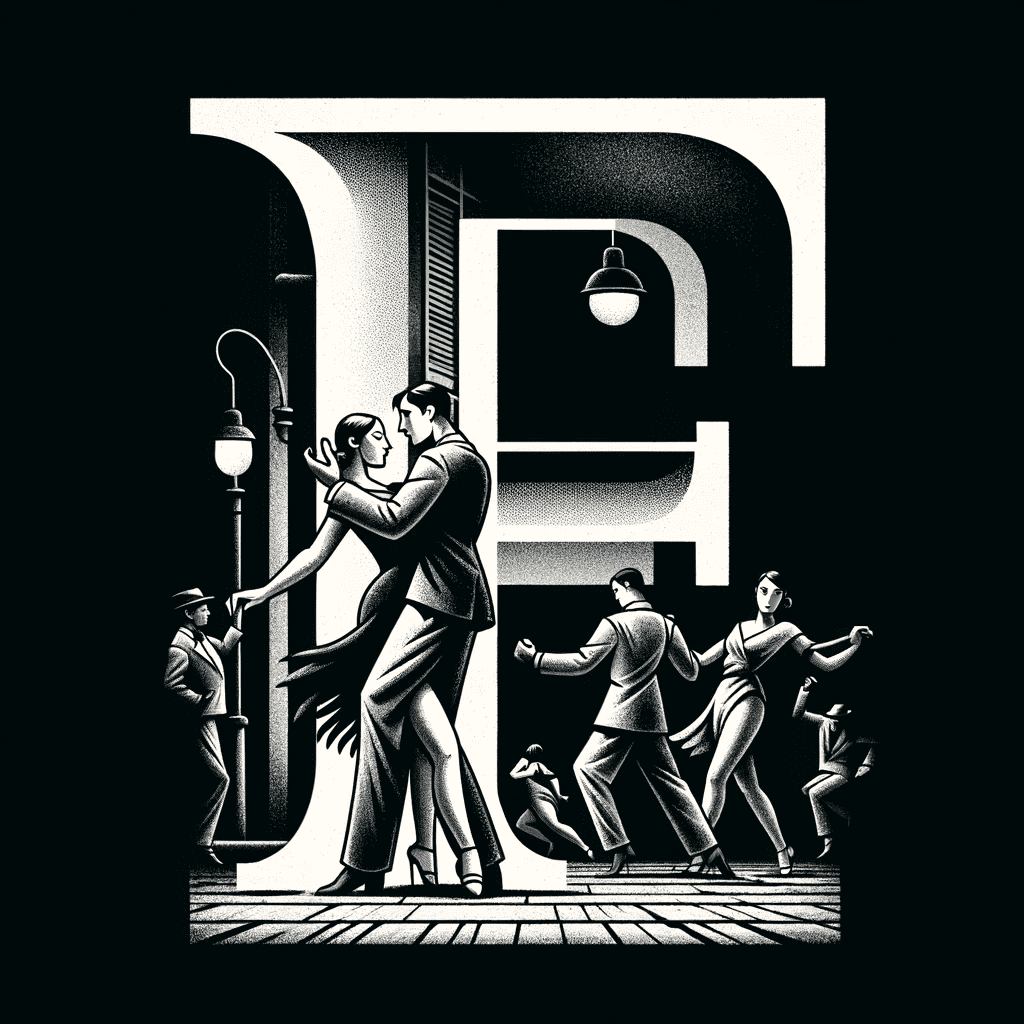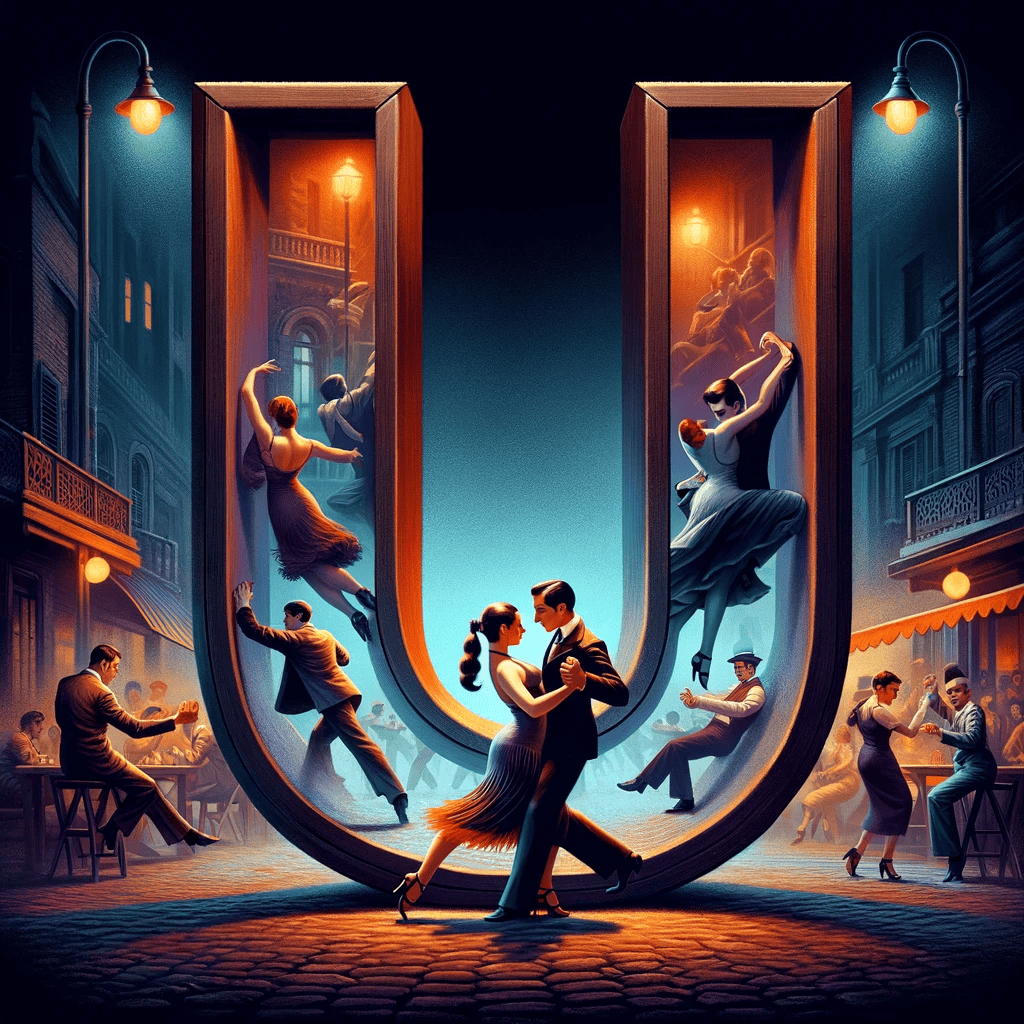Introduction
Over the years, our online community has compiled a Lunfardo Dictionary. Here you find the most common expressions used in Lunfardo, especially in Tango Lyrics. Follow the linked pages for each letter or read below about the history and usage of Lunfardo in Tango.
Table of Contents
Origins and Historical Context
Language is a powerful tool that evolves over time, reflecting the culture, history, and diversity of a nation. In Argentina, a country known for its vibrant tango, rich literature, and passionate people, one can discover a distinctive dialect called “Lunfardo.” Born on the streets of Buenos Aires, Lunfardo is a vibrant and playful jargon that has become an essential part of Argentina’s cultural identity. In this article, we will delve into the origins, features, and influence of Lunfardo, shedding light on this captivating linguistic phenomenon.
Lunfardo emerged in the late 19th century in the lower-class neighborhoods of Buenos Aires. It was primarily used by marginalized groups, such as criminals, immigrants, and the working class, as a way to communicate covertly and establish a sense of belonging. The word “lunfardo” itself is believed to derive from the Italian “lumbardo,” meaning “lombard.” Lombardy was a region in Italy associated with shady characters, and the term “lunfardo” was used to describe their language.
During this time, Buenos Aires was experiencing a massive influx of immigrants, mainly from Italy and Spain, who brought their own linguistic influences to the mix. Lunfardo drew heavily from Italian, Spanish, and other languages, incorporating a blend of slang, colloquialisms, and double entendres. The dialect soon became a representation of the city’s lively street culture and expressed the spirit of the underprivileged classes.
Distinctive Features and Vocabulary
Lunfardo is characterized by its inventive vocabulary, often transforming or distorting words to create new meanings. It thrives on playful wordplay, metaphorical expressions, and ironic humor. Some of the distinctive features of Lunfardo include:
- Vesre: A notable characteristic of Lunfardo is “vesre,” which is the inversion of syllables in a word. For example, “café” becomes “feca,” and “mujer” (woman) becomes “jermu.” This inversion adds a playful and distinctive touch to the dialect.
- Italian Influence: Lunfardo borrows extensively from Italian, particularly from dialects spoken in Naples and Genoa. Words like “laburar” (to work), “feca” (coffee), and “fiaca” (laziness) have Italian origins. This influence reflects the significant Italian immigrant population in Buenos Aires.
- Criminal Jargon: Due to its origins among marginalized groups, Lunfardo incorporates a substantial amount of criminal jargon. Terms like “punga” (pickpocket), “chanta” (con artist), and “tongo” (fraud) add a gritty and edgy element to the dialect.
- Tango Connection: Lunfardo is intimately tied to the world of tango. Many tango lyrics and expressions include Lunfardo words, enhancing the poetic nature of the dance. Tango acts as a cultural vessel for preserving and disseminating Lunfardo vocabulary.
Influence and Cultural Significance
Over time, Lunfardo has transcended its origins and permeated various aspects of Argentine culture. It has left an indelible mark on literature, music, and everyday conversation. Numerous renowned Argentine authors, including Jorge Luis Borges and Roberto Arlt, have incorporated Lunfardo into their works, lending them an authentic and local flavor.
Lunfardo’s influence is also evident in Argentine cinema, with iconic films like “El secreto de sus ojos” and “El hijo de la novia” featuring characters who speak in Lunfardo-infused dialogue. The dialect’s integration into the arts further solidifies its cultural significance and its role as a symbol of identity for Argentinians.
FAQs
Lunfardo stands as a testament to the resilience and creativity of the Argentine people. Born from the streets of Buenos Aires, this vibrant dialect has evolved over time, carrying the echoes of the immigrant experience and the struggle of the working class. Its unique vocabulary and distinctive features have become an integral part of Argentina’s cultural fabric, enriching literature, music, and everyday conversations.
By embracing Lunfardo, Argentinians celebrate their heritage, preserve their history, and keep alive the spirit of their ancestors. This playful and colorful dialect serves as a testament to the power of language to unite, inspire, and shape a nation’s cultural identity.
































